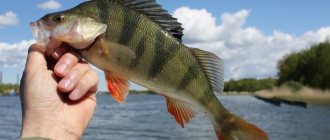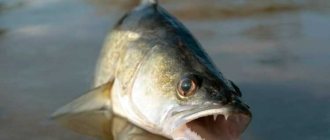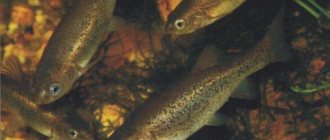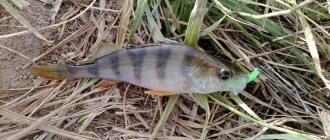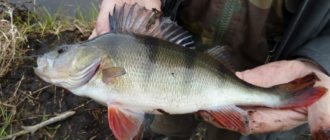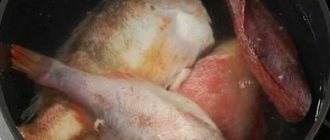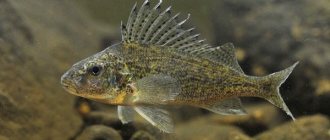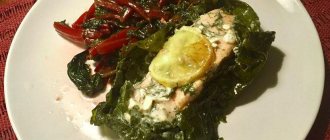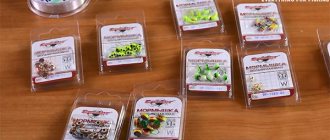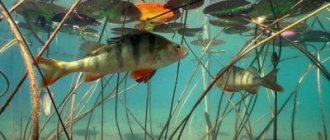Perch is a predatory fish that hardly needs any special introduction. You can meet it in any fresh body of water. In rivers large and small, in lakes, ponds and reservoirs. For this reason, it is the most popular object of amateur fishing. Moreover, at any time of the year and with any gear. However, let's be honest. Catching a small “pissy” perch sometimes becomes boring, but large ones are caught sporadically. And the main reason is that we don’t know enough about the fish we catch. About her habits, preferences for food and habitat. And, naturally, to catch a large perch you need to choose the right tackle.
Description of the appearance of the perch
The appearance of the perch will not allow you to confuse the fish with someone else. The body is compressed from the sides, covered with dense scales, like a grater. If we do not take into account the dependence of color on living conditions, then the “normal” color of a perch can be considered greenish-yellow with black transverse stripes on the sides. The number of stripes varies from 5 to 9.
The caudal, anal, and paired ventral fins are bright red. Breasts may appear yellowish. The largest and most spiny first dorsal fin with a noticeable black spot.
Very expressive eyes on a muzzle head with large gill covers. The iris of the eyes is usually yellow, but can be white and even black.
In addition to the dorsal fin, the perch has spiny spines on the second dorsal, ventral, pectoral and anal fins.
The color of the perch's belly is dirty white with yellowish tint.
Adult, seasoned perches have a clearly defined hump.
For this feature, trophy minke whales are popularly nicknamed humpback whales.
As mentioned above, the color of the perch is strongly influenced by the surrounding environment. The richness of the color depends on the environment, the composition and amount of food, and the health of the fish. A dependence on the hierarchical position of the fish in the school was also revealed.
It is worth adding that some color variations (albinos or completely black melanists) are genetic in nature. These manifestations of heredity are rare, but they do exist.
The largest river perch
Perch grows up to half a meter in length and can weigh up to 6 kilograms. I didn't make a mistake. There is officially recorded data. See for yourself how much the largest river perch in Russia and the world “pulled”:
- Girk Fastenau (Germany) caught a 2 kg perch.
- year 2014. A perch weighing about 3 kilograms was caught in Idaho (USA).
- In Melbourne (Australia), the fisherman is famous for his 3.5 kg perch.
- 1985 In the Gulf of Finland in winter, an angler was lucky enough to catch a perch worth 3,600 grams.
- Vladimir Prokov from Kaliningrad caught a striped fish weighing 4.5 kg.
- The world record was set in 1996 by Nikolai Podymer from the Tyumen region. His result was a perch weighing 5 kg 960 g.
Here's a perch for you. There is something to be proud of.
However, not everyone is lucky enough to catch such a trophy. The size of the perch directly depends on the reservoir and food supply. However, catching a 300 gram perch with ultralight is also a joy.
Speaking about size, it is worth saying a few words about the varieties of river perch.
The nutritional value
Sea bass is a fairly fatty fish, on average it contains about 3.3 g of fat per 100 g of product. It is also rich in proteins (18.2 g per 100 g of product). Sea bass meat contains fatty acids and some cholesterol, but no carbohydrates at all. The calorie content of this fish is 103 kcal.
Sea bass contains a lot of different vitamins: in small quantities (up to 7% of the daily value) it contains all the B vitamins, vitamins A and E, as well as about 25% of the daily value of vitamins PP and D, about 80% of the daily value of vitamin B12.
Among the micro- and macroelements, it is especially worth noting the high content of phosphorus (220 mg), iodine (60 mcg), chromium (55 mcg) and cobalt (30 mcg), although there is also a lot of calcium, magnesium, potassium, sulfur and zinc in this fish.
Varieties of river (ordinary) perch
The classification of living organisms is a complex topic. What to say about fishermen when pundits argue. If you pick up the “correct” fish guide, where species characteristics are scattered across tags, then the question of the types of river perch does not arise. As well as its subspecies. There is Perca fluviatilis
. Thanks to its biological plasticity, ecological forms are widespread throughout the area. Even in one body of water, 2-3 morphs can coexist.
What do we mean when it comes to perch varieties?
When entering adulthood, a fry can find itself in different conditions. In large bodies of water, with an abundance of relief, territory and food supply, the fry of the perch have several paths.
Stay in the coastal area. Live, feed on invertebrates or other young fish, grow to sexual maturity and begin reproduction in their native clump of aquatic vegetation. Only in the off-season should you go away from the shore for a while.
Another way is to “slide” into the depths and become an outright seasoned predator. Yes, it is dangerous there, but living conditions change slightly. It is no longer small boogers that end up as food, but normal fish.
The result is the size and habits of the perch. The coastal minke whale grows slowly, while the deep-water minke whale, feeding well and with high calories, grows to the size of a humpback whale.
It is worth noting that such a distribution among ecological niches in the world of Nature is rational. It reduces competition between individuals of the same species. A similar situation occurs in whitefish, bream and roach. In the latter, even the fishermen themselves distinguish between “marine” and “regular” forms.
And it’s not superfluous to mention the pike. There is a small grass, and there is a “crocodile” or “mother” weighing up to 20 kg. These are unlikely to grow in the shallow water of the nearest pond.
Habitats
This type of fish inhabits almost all natural and artificial reservoirs of the Northern Hemisphere, which includes rivers and lakes of the USA and Canada, as well as reservoirs of Eurasia. Perch feels comfortable in the presence of a slight current, not great depths, as well as aquatic vegetation, where the perch prefers to hunt for small fish. As a rule, perch gathers in small schools and leads an active lifestyle, both during the day and at night. Interestingly, perch also hunts in schools. Perch is found in high altitude conditions, as well as at depths of up to 150 meters.
Sea bass leads an active lifestyle, both in the coastal zone, in thickets of aquatic vegetation, and at a considerable distance from the shore on a rocky bottom.
How long does perch live?
The fish becomes dependent on the conditions of existence. Even coastal bass can live out their entire fish life. If you're lucky. Or it will be eaten by other fish when it is a juvenile. Including his maternal relative. Cannibalism among predatory fish is not uncommon. Or a lucky spinning angler will take it home. Various things can happen. Up to winter death or infection.
Do not forget that the information available to scientists is inaccurate. To determine the oldest perch, you need to “gut” many reservoirs. Conduct research. And only if you are lucky enough to catch the biggest one. This is not a guppy fish in an aquarium, where its entire life takes place before the eyes of the aquarist.
According to ichthyologists, one of the oldest perches was caught in Mongolia. After laboratory tests, his age was determined to be 23 years old.
Sea bass: description, interesting information about the fish
The Latin name for sea bass is Sebastes. This type of fish looks a little like the perch we are used to.
But at the same time, its differences from the river inhabitant of rivers are so significant that it is classified as a different order, and even a different family of fish. Namely, to the suborder percoid and to the scorpionidae family.
The most important difference is that sea bass has poisonous glands on the sharp rays of its fins. If you prick yourself with these thorns, there will be inflammation in this place.
Sea bass (Sebastes).
The genus of sea bass is diverse, it has about 100 species. The largest number of species, 56, are found off the southern coast of California. The second most species-rich region is the North Pacific Ocean. In the south of the Pacific and also the Atlantic oceans, only two species of these fish live (S. capensis and S. oculatus). In the North Atlantic Ocean there are already 4 species of sea bass (S. fasciatus, S. mentella, S. norvegicus and S. viviparus).
Sea bass are scorpion fish, and therefore their spines are poisonous!
It is worth noting that all types of perch vary greatly in size. If the smallest ones reach 20 centimeters, then among the larger species there are real giants - over a meter long and more than 20 kilograms in weight. The average lifespan of these fish is 15 years, some species live for over half a century. But there are also true long-livers. For example, the species Sebastes aleutianus is simply a record holder not only among perciformes, but also among other fish species. The maximum recorded age of one of the individuals of this species is as much as 205 years.
Sea bass lead a predominantly bottom-dwelling lifestyle, with some species living in coastal zones and some found at depths of up to three thousand meters.
Sea bass are long-living record holders; the maximum age to which these fish lived was 205 years!
Depending on the depth at which these fish live, their appearance also changes. Deep-sea species are distinguished by their huge eyes because the lower layers of water are very dark. Their color is pink or bright red, monochromatic. Coastal species are less uniform in color - they are darker, with a spotted or striped pattern. The pattern is most clearly expressed in young individuals; with age it loses its outline, and in other cases disappears completely. The eyes of these species are relatively small compared to their deep-sea counterparts, but still significantly larger than those of many other fish species.
The favorite habitat of coastal species of sea bass is thickets of algae. This is a very good hunting spot for them. They move little, only watching for approaching food and, abruptly jumping out of ambush, catch unwary small fish. The predator's diet also includes large crustaceans and other invertebrates.
The diet of sea bass consists of animal organisms: fish, crustaceans.
Deep species move much more, making long migrations.
All species of sea bass are viviparous fish. They do not spawn eggs, but many very small larvae from two to 4 millimeters in length. The fertility of female sea bass is simply amazing - imagine, large females are capable of sweeping up to two million larvae.
Mating of males with females sometimes occurs even several months before the throwing of the larvae. Moreover, the females of some species leave the males after mating and form separate flocks. But nature backed up – in this case, fertilization is “delayed” for several weeks, when the male reproductive cells become active. Embryo development proceeds at a rapid pace.
Most species of the sea bass genus are deep-sea fish.
Some species spawn larvae in winter or spring, others in summer or autumn. Larvae, unlike adults, do not immediately sink to the bottom, but live in the upper layers of water. At this time their color is very invisible. This, as well as the fact that the fry hide in algae and various objects floating on the surface, allows them to be not too noticeable to predators.
Growing up, they descend deeper and deeper into the depths of the sea and sooner or later reach the very bottom, where they live for the rest of their lives.
If you find an error, please select a piece of text and press Ctrl+Enter.
Where does perch live?
If we consider the entire distribution area, then our river perch is a cosmopolitan fish. It's easier to say where it is not. By the way, it is not available in Spain and Scotland. They tried to populate it, but it didn’t take root.
Europe, Asia, Australia, New Zealand, South Africa. Perch can tolerate fairly wide temperature changes. In addition, it is able to live not only in fresh water bodies. For example, it lives quite normally and for a long time in the brackish lakes of Kyrgyzstan. In running and standing water. It does not survive only in the “puddles” typical of crucian carp. Lack of oxygen in the water is fatal to perch. It also avoids mountain rivers.
There are lakes where the fish population consists either of only perch, or the predator is adjacent to one or two other species. For example, there are perch-sorog lakes.
To summarize, we can say that the adaptation of a perch is limited by several parameters:
- Water temperature. The range of existence is between 4 and 30 degrees.
- Current speed. Perch are uncomfortable in fast-flowing rivers.
- The fish can withstand some salinity, but it is not a marine species.
- Oxygen regime of the reservoir.
Habits
Fish of different sizes have their own habits. Large individuals are agile and aggressive. They can chase small fish that have strayed from the school for a long time. A large perch can circle around its prey for a long time until it catches it.
Small perches are quite active. While hunting, they can run aground or even onto coastal sand. They swim very quickly, while periodically stopping for a few seconds.
During the hunt, the perch eats everything that could move into its mouth. The basis of the diet is small fish and caviar. Particularly large individuals can feed on crayfish.
One school can contain up to 10 large perches. The number of small fish in one school can be several hundred.
How does it move?
The movement of the fish is carried out by bending its body. The muscles are located in the head and fins. They move the fins, jaws and gill covers.
By the end of May, perches begin to actively move and form small schools. Each of them chooses its own habitat and does not leave it throughout the summer. The size of one school depends on the size and age of the fish. The largest individuals can move alone.
Behavior depending on the time of year
The behavior of perches depends on the time of year and the temperature of the water in the reservoir. There is a direct dependence of the fish on the movement of other small fish, which form the basis of their diet.
In the spring after spawning, the perch continues to be in the bay where it spawned. Then the fish gather in schools and move to areas with a small current and a large number of places where they can set up an ambush.
In summer conditions, perches take refuge in dark areas. These could be bridge supports or boat docks. The fish comes out of its hiding place to feed early in the morning and at nightfall.
At the beginning of autumn, perch again begins to form schools to move deeper into the reservoir. The lower the air temperature, the deeper the fish go. In winter, fish very rarely leave their camp site.
All life processes begin to slow down. Due to the abundance of food at the wintering site, the perch does not show much activity.
Where does he live?
Perch has a fairly wide range. This is due to the large number of species. It can be found in the brackish lakes of Kyrgyzstan, in the freshwater part of the Caspian and Aral Seas, as well as in the river estuaries of the Black Sea.
Perch lives in many European reservoirs, in the Caucasus, throughout much of Siberia, as well as in the Turkmenistan region. In Russia, perch can be found in the southern and middle parts. It is quite rare in northern rivers. There is no perch in the Yenisei.
This fish prefers lakes with clean water, where there is a large amount of food and good conditions for reproduction.
Is this a river or sea fish?
There are river and sea species of perch. The river variety is distinguished by a large number of bones. The peculiarity of sea fish is its red color.
What does it eat?
Perch fry feed on plankton. The diet of adult perch mostly consists of small fish up to 7 cm. In spring, the fish eats worms and some types of algae. In summer the main diet is fish, and in the fall - crustaceans and jigs.
IMPORTANT. Perch hunts only those fish that swim in open waters and do not offer any resistance.
First order diet: stick and minnow. The second order diet contains:
- bulls;
- crucian carp;
- bleak;
- ruffs;
- young silver breams.
Sometimes perch can feed on mosquito larvae and frogs. Small stones and algae are often found in the stomach. They are needed to improve the predator’s digestion. Cannibalism occurs among this species, and this has a negative impact on the size of their population.
Predator or not
Perch is the largest predator that lives in lakes and rivers. It eats not only small fish, but also its own caviar.
How fast it grows
The largest individual weighed almost 6 kg and was 23 years old. The fish grows quite slowly. In the first year, it can only grow 5 cm, and in 6 years of its life, a perch can only grow 20 cm.
Many factors influence the growth rate. If a fish lives in a small body of water with a small food supply, then it will grow very slowly. In a large body of water, such fish grow 2 times faster, and in a year can grow up to 12 cm. To gain 1 kg of weight, a perch needs to eat about 5 kg of food.
Perch growth by year
There is a special table that allows you to track the relationship between age and height.
| Age, years | Length, mm |
| 1 | 60 |
| 2 | 120 |
| 3 | 160 |
| 4 | 200 |
| 5 | 220 |
| 6 | 240 |
| 7 | 260 |
| 8 | 280 |
| 9 | 300 |
| 10 | 310 |
| 11 | 330 |
| 12 | 340 |
| 13 | 350 |
| 14 | 360 |
| 15 | 370 |
| 16 | 380 |
| 17 | 390 |
| 18 | 400 |
| 19 | 410 |
| 20 | 420 |
| 21 | 430 |
| 22 | 440 |
| 23 | 450 |
Weight Limit
The maximum weight depends on the type of perch. The Nile variety is considered the largest. Such an individual can grow up to 150 kg. The maximum weight of a regular river perch is 6 kg.
How long does he live?
Life expectancy depends on the body of water in which it lives.
IMPORTANT. Record life expectancy is 23 years.
This case was recorded in Mongolia. Perches very rarely live to this age. On average, life expectancy varies from 10 to 15 years.
Fish that live in northern reservoirs live longer, while being small in size. Individuals living in southern rivers and lakes live several years less, but can grow up to 23 cm in length.
Lifespan is affected by the availability of sufficient food and the overall quality of the ecosystem.
Perch spawning
Perch spawns very early. This is the second fish, after pike, in terms of spawning time. Climatic conditions can shift the breeding season by some dates, but usually spawning begins in early May and ends by the end of the month.
Perch lays its eggs on snags, flooded bushes, and hard vegetation. The caviar is small, collected in ribbons. The length of the ribbons can reach 1 meter in large old perches.
After hatching, the perch larva begins to feed on microplankton and aquatic invertebrates. By the time the fry of other fish in the reservoir emerge from their eggs, the perch fry are already able to hunt for them.
What does perch eat?
The diet of perch is determined by the availability of prey, its size, and number. There is no denying that perch is a predatory fish. However, in most cases he has to eat various small things. Even after reaching adulthood.
In the first year of life, perch fry consume plankton. The juveniles start feeding on benthos in the second year of life. By this time, their gastrointestinal tract is already ready to consume benthic invertebrates. These include larvae of mosquitoes, caddisflies, and other insects.
Growing to a size of 13-15 cm, juvenile perch begins to engage in predation. During this period, perch cannibalism begins to develop. It is at this stage that the division into “grass” and “sea” (deep) begins. The first migration to the depths and to the shore puts its end. Perch remaining in wintering areas becomes a real predator earlier. Those that have returned to their summer camps begin to eat benthos and fish larvae.
However, here you need to take into account that the reservoirs are different. Just like their population. Lakes inhabited exclusively by perch will definitely be inhabited by cannibals. The attraction (need) to hunt for relatives in this case is revealed already in the first year of life.
As for large perches, they will not disdain to eat dragonfly larvae. However, they are not destined to feed their growing body on boogers. Humpback whales need normal, complete food. Fish, crayfish, frogs. Moreover, the percentage of one or another type of food can be quite impressive. For example, studies of Volga perches in the mid-80s revealed that the diet of perch includes 20% crayfish.
Thus, perch is a predatory fish. The diet is very varied. It is determined by the size of the fish, the availability of food, and areas of residence in the reservoir. Naturally, this must be taken into account when going fishing.
